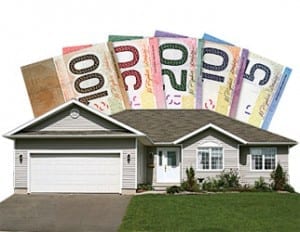Mortgage renewal: What’s best a variable or fixed rate?
A reader wants to help his parents and be debt-free sooner. Can he succeed with both goals?
Q: We have a mortgage on our home that’s up for renewal this month. There are 23 years left on the amortization and $288,000 left on the mortgage. Should we stick with a fixed rate at 2.35% to 2.45%, or go with a variable at 2.15%. I can’t foresee rates getting any lower and the variance between variable and fixed is small. What would you recommend?
Also, we have a second property that my parents rent. The mortgage is $55,000 and they pay $400 to us each month. In reality, however, I take that money and put it in a savings account under their name and pay the mortgage, out of pocket. I have 16 years left on the mortgage but I’d like to shorten that debt time. As such, I am considering paying a lump sum of $5,000 per year and this would help pay off the home in six years. The current rate is 3%, renewable in 2017. Is there any advantage to renegotiating this loan and what can I do to minimize my monthly costs while paying down both mortgages?
— Trying to be debt-free while struggling with sandwich generation problems, Toronto, Ont.
I’m a big believer in variable-rate mortgages. I’ve recommended them for many years over fixed rates—and my clients have done extremely well.
My rule is there must be a 1.00% spread between fixed and variable rates before switching made sense. These days that spread has virtually disappeared and, as a result, I’ve had to readjust my strategy. As a result, I’d go as far to say that these days variable-rate mortgages are not priced well. The spread—or the difference between the fixed rate and the variable rate—is around 0.25%. For that reason, I’d currently recommend renewing with a fixed-rate mortgage.
But to save money on the mortgages, I still wouldn’t recommend breaking the mortgage term on the rental property loan. The savings probably would not outweigh the penalty. Since interest rates are expected to remain low for the next year or so, and given the small size of the mortgage, any savings from breaking the mortgage to renew now would be negligible.
Just remember that your mortgage interest on the rental property is a tax-deductible expense. It can be written off against any rental income, possibly giving you a net loss that could reduce your taxable income. End result is you could pay less income tax. But I’ll be upfront: Any tax-saving strategy requires a discussion with your accountant.
While you did ask for savings strategies, I do have another suggestion. You may want to consider refinancing the rental property for as large a mortgage as possible. Take those funds and pay down the mortgage on the principal residence. By creating a deductible expense (the interest payments on the rental property mortgage) and reducing your non-deductible expense (the mortgage on your primary residence) you could save on annual income tax owed.
With this strategy you aren’t really increasing your total debt, you’re just shifting it from the principal residence to the rental property. Again, I would strongly suggest you speak with your accountant before making any changes.
Steve Garganis is a mortgage broker at Mortgage Intelligence and former editor of CanadaMortgageNews.ca.
When it comes to interest rates, the unexpected can become the expected before we know it. Several countries now have negative interest rates. Who would have predicted that a decade ago?
Then again, the odds of prime rate falling more than 0.15 to 0.30 percentage points in the next few years are low. Not only would it require another economic shock, according to the Bank of Canada, but banks would have to be willing to pass along lower overnight rates to borrowers. As we saw with the January and July 2015 cuts, banks are becoming less keen on doing that since they make less profit as rates approach zero.
Given that there’s less hope of a materially lower prime rate, today’s historically small differential between fixed and variable rates, and the peace of mind factor, fixed five-year mortgages are compelling under 2.50%. That’s especially true for risk-averse borrowers.
But—and this is a big but—if there is any chance whatsoever that you might need to move, refinance or discharge your mortgage before five years, find a lender with one or more of these features:
- Good portability: so you’ve got at least a few months to move the mortgage to a new property with no penalty
- A “fair” penalty: meaning one that’s likely to be just three months of interest (As a litmus test, ask the mortgage advisor to estimate your penalty using today’s rates. From a penalty perspective, the best 5-year fixed mortgages are those that ding you with just three months’ interest penalty when rates are unchanged.)
- A favourable increase policy: so you can increase the mortgage before maturity at good discounted rates with no penalty.
Robert McLister is a mortgage planner at intelliMortgage and founder of RateSpy. You can follow him on Twitter at @RateSpy
The difference between current fixed and variable mortgage rate options translates to about $35 per month. Given this small difference, your decision with what type of mortgage to commit to really depends on what you think the Bank of Canada will do. Recently the federal bank indicated it’ll take a few years for low oil prices to work themselves through the economy which is a good indicator of how slow the benchmark (prime rate) will move up in the next few years. If you do opt for a fixed rate, consider the $35 extra each month as an insurance policy to protect you from rising mortgage rates and higher payments in the future.
As for your rental home consider putting the $400 your parents pay you towards the mortgage, as an extra payment. The assumption here is that the savings account where you are currently putting this monthly $400 is not generating 5% or more in returns—the break-even point when it comes to invested money (3% cost of borrowing + 2% inflation).
Of course, you’re probably wondering if it makes sense to break the $55,000 mortgage and consolidate it with the mortgage on your primary residence now that the home mortgage is up for renewal. To do this, you’d need enough equity in your primary residence so that the combined $343,000 was less than 80% of your home’s value. The savings of this strategy would depend on the penalty for breaking the $55,000 mortgage, the rate savings you’d get on the bigger combined mortgage (small mortgages often get less competitive rates) and your refinance costs. Once you get a penalty quote from your existing lender, have a mortgage advisor run the numbers to see if consolidating is worth it.
Truth be told, the savings may not offset the penalty and fees. You may be better off keeping the mortgages separate and hammering down this second mortgage with prepayments (assuming that’s the best use of your discretionary cash).
If you were charging fair market rent and reporting the income, you could potentially write off the mortgage interest, property taxes and maintenance. In that case, having a separate mortgage would help create a clean paper trail for tax purposes. But that may not be possible or desirable in your case.
Nawar Naji is a former mortgage broker with Mortgage Architects in Toronto, Ontario and is currently a licensed Realtor.







